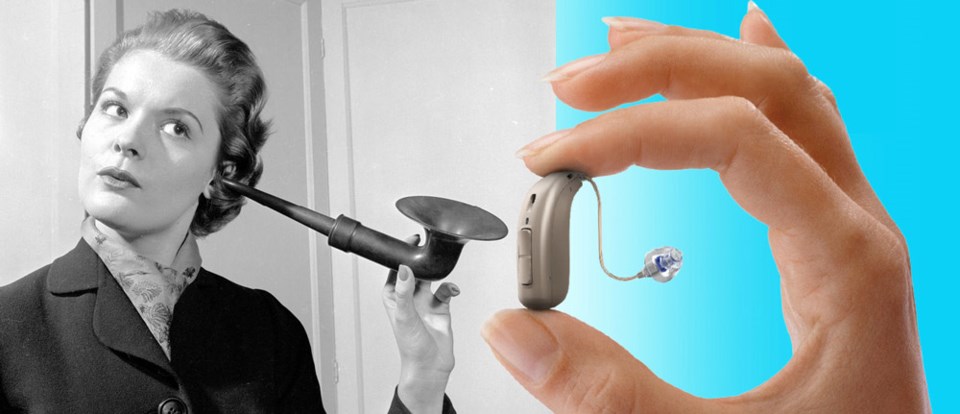When was the last time you noticed someone wearing a hearing aid? If you can’t recall, it’s not because fewer people need to wear them. In fact, more and more people require hearing assistance and the demographic has become decidedly younger too.
It all boils down to innovation and technological advances—which have been rapid in recent years.
Humans have struggled for centuries to find solutions for hearing loss - from the animal horn in the 16th century believed to be the first ear trumpet, to Frederick C. Rein’s “acoustic headbands,” at the start of the 19th century, designed to hide ear trumpets in the user’s hair, and on the eve of the 20th century, we had the introduction of the electric hearing aid.
Fast forward to present day, and we can see how quickly the digital age transformed the design, functionality and comfort levels of hearing aids. Today’s devices are sleeker and smaller making them ultra-discreet, and in some cases, virtually undetectable. Remarkably, there are now extended-wear versions which are placed in the ear canal to be worn for several months at a time. The behind-the-ear styles also have been streamlined, with some of the manufacturers offering a wide range of colour options, making them more fashion forward.
Technology has improved the quality of sound through these devices by filtering bothersome moderate-to-high background noise in public environments.
Bluetooth connectivity enhances the hearing assistance experience for the user with their smartphones, TV, tablets and favourite audio devices. This allows them to stream audio from any device. Smartphone connectivity also allows the user, through an app, to discreetly control volume, bass and treble—essentially serving as a remote control for the hearing aid.
Though the power source for hearing devices—tiny silver batteries— has essentially remained the same, there have been some recent advancements in the evolution of rechargeable hearing aid technology.
Rechargeable devices offer enhanced reliability, which is imperative because without these unsung heroes, even the best technology inside hearing aids can’t work. When fully charged, the user knows how long their batteries will last. So, there’s no need to worry about them quitting unexpectedly.
Rechargeable devices, like the Oticon Opn™ models, conveniently eliminate the necessity to constantly replace them. Just pop the hearing aids into their recharging unit at night for a few hours—no need to open the battery compartment—and then, they’re fully operational. The comfort, versatility and ease of use have made these devices increasingly popular with consumers who appreciate not having to buy the tiny, disposable batteries and replace them daily.
While hearing devices have improved dramatically since the early days of trumpet horns, the demand for hearing aids is continuing to rise. At NexGen Hearing, skilled hearing professionals and support staff understand how important hearing is to daily life and have successfully improved the quality of life for numerous Canadians suffering from hearing loss.
For those looking to upgrade their devices, or anyone considering getting evaluated for a hearing aid, the first two weeks of November is an opportune time to do so. From November 1-15, all NexGen Hearing clinics will be offering customers the opportunity to take advantage of Employee Pricing, so buyers pay what the NexGen Hearing professionals pay.



